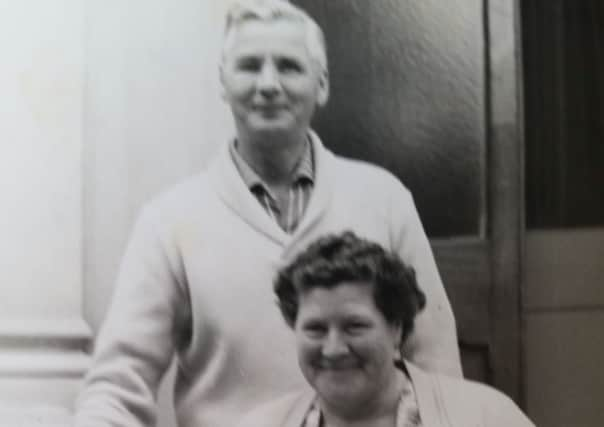Natural remedies for modern ills


From combing apple cider vinegar into your hair to cure an itchy scalp to eating figs to cure a sore throat, these are just come of a remedies pharmacist Dave Harcombe’s grandparents passed down to him.
Now Dave is making an international name for himself passing on the natural remedies, learnt from spending happy childhood hours in his grandparents’ garden and kitchen in Kirk Sandall.
Advertisement
Hide AdAdvertisement
Hide AdSince he started writing travel reviews and articles about natural cures for the over-50s travel review and advice site, Silver Travel Advisor (www.silvertraveladvisor.com), his work has been featured in newspapers in the US, including the New York Times, as well as extensively in UK newspapers and magazines.
“I have a lot to thank my grandparents for, as it was those early years in Kirk Sandall and Lily’s fabulous remedies that inspired me to pursue a career in pharmacy, but I never lost my interest in natural cures.
“All these years later, I can now attribute my writing success to my early life in Doncaster and to my wonderful grandparents Lily and Joe,” says Dave.
Dave’s articles particularly focus on cures that are appropriate for travellers and holidaymakers, when labelling in an unfamiliar language, pharmacies that close at unexpected times, or being caught short with a sting, sickness or sun-burn makes conventional cures inaccessible.
Advertisement
Hide AdAdvertisement
Hide AdHe advises travellers on how to use easily found natural products to aid recovery, often more effectively than those found in a pharmacy.
Joe and Lily Fay lived in King George Square in Kirk Sandall, and Dave grew up in nearby Lancaster Avenue. Joe was a keen gardener and had an award winning garden. Lily could create culinary magic from anything she produced.
“To a young future pharmacist my nana’s ability to turn garden produce into medicine was exciting and mystical. Her husband, Joe, was a proud, tidy man and even his compost heap was immaculate! I can still picture him in the garden, collar and tie (always a tie) and long trousers tucked into his wellies, even in summer. He had an apple tree at the bottom of his productive vegetable garden, just to the left of a gate which led to the track that ran alongside the train line to Hull and Doncaster,” says Dave who is married with two children.
“To Lily, those apples were sheer magic. Her crumble was amazing but she also used them for household remedies. To keep the doctor away, every morning Lily cut an apple into pieces with the red handled fruit knife we bought her on a day trip to Bridlington and ate it mid-morning. If she felt a little hoarse, she would bake an apple, let it cool for around 10 minutes, add three teaspoons of local honey, a knob of butter and mash well. Then eat slowly, keeping it in the mouth as long as possible.
Advertisement
Hide AdAdvertisement
Hide Ad“Joe’s tip for an itchy scalp was to comb apple cider vinegar into his hair night and morning until it became wet through. Lily also used it as a skin toner.
“Figs were eaten to help alleviate a sore throat and for constipation, as indeed were the locally produced pears that my grandparents ate daily. And if neither of those did the trick, Joe’s vegetable patch produced rhubarb grown under upturned buckets, and cabbages.
“The excess cabbages were piled up by Jon and me onto a trolley and taken to Reg, the village green-grocer.
“Lily would use a cabbage compress if anyone had a headache.
Advertisement
Hide AdAdvertisement
Hide Ad“She crushed the cabbage leaves, put them onto a hot cloth, rolled it up and placed on the forehead.
“Warts or verrucas were banished by rubbing with broad been pods daily, then gently file each night.
“These days I also recommend applying the mushy side of a banana skin and leaving for a day or two, then reapply.”
“They were wonderful days, back in the early 1960s in Kirk Sandall, and it reminds me how often these days we take mass-produced toiletries and medicines for granted.
“But it’s worth taking stock and thinking about what we are putting into and onto our bodies, because there may well be a healthier and equally effective alternative down the garden path.”